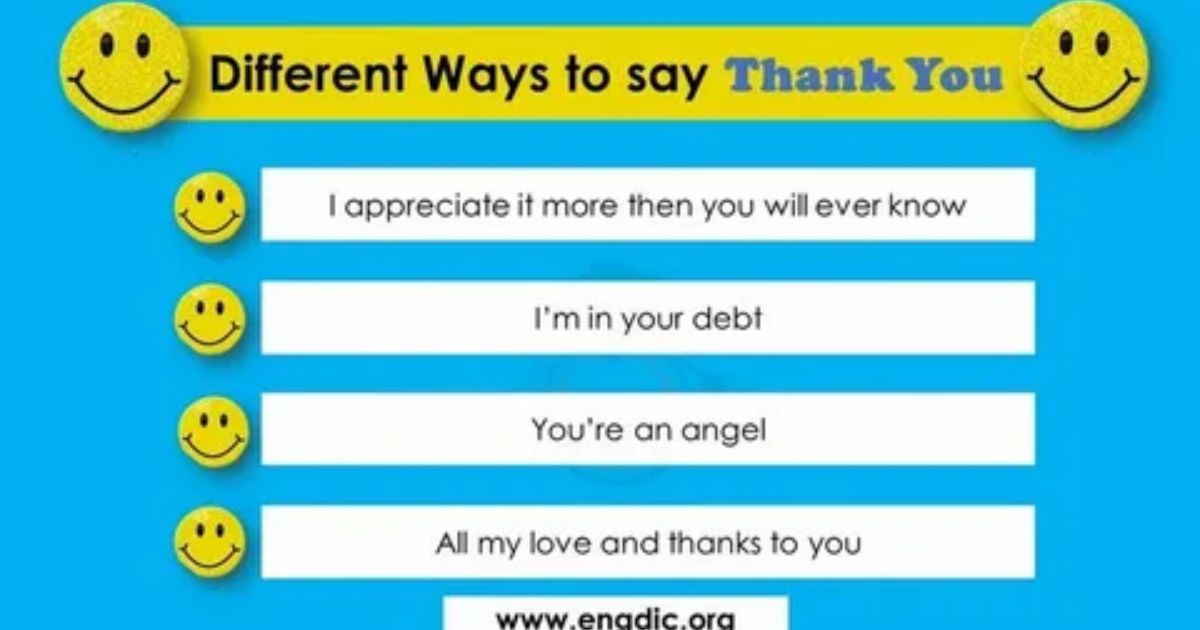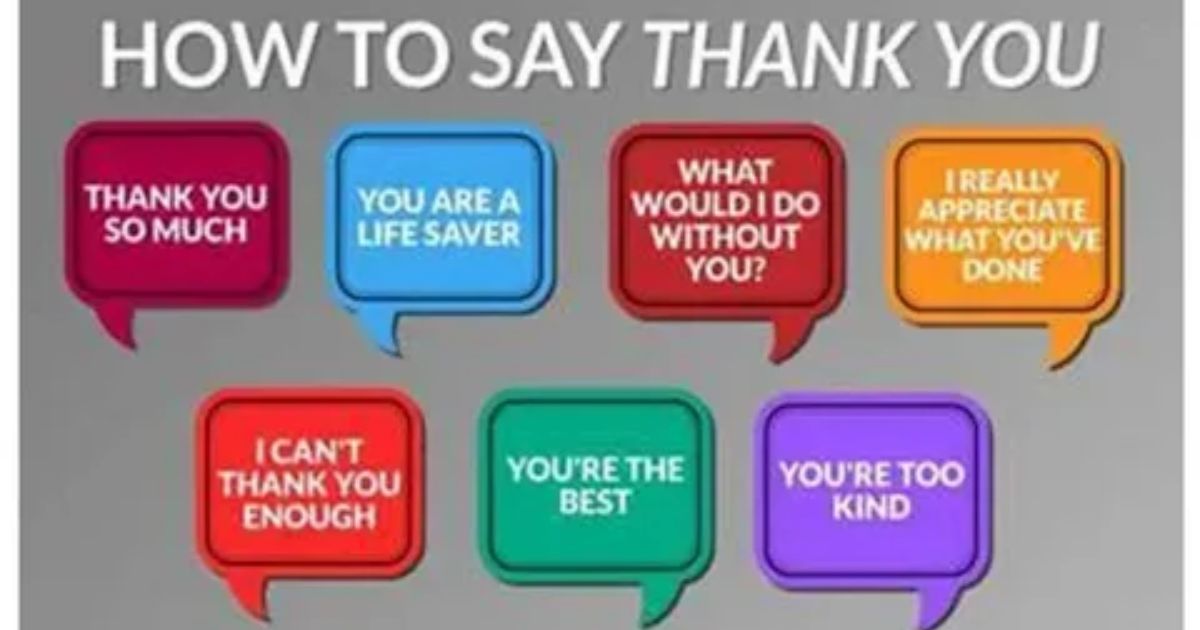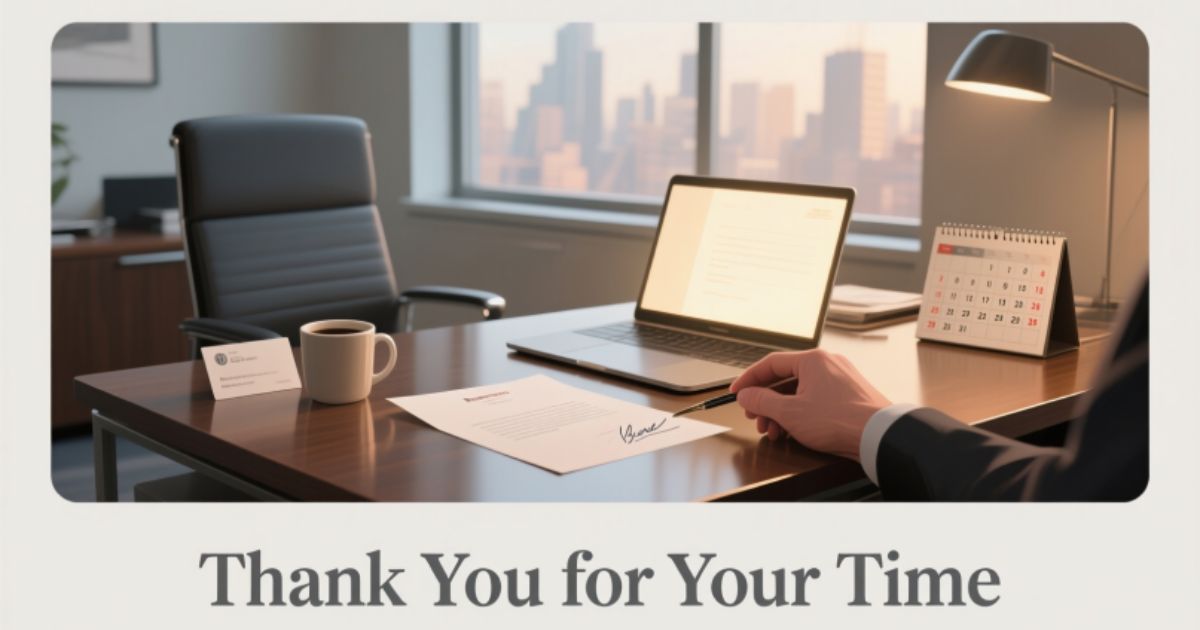Saying thank you for your time might sound simple, but finding the right words can feel tricky. Maybe you just finished a meeting, an interview, or a mentorship session and want to show genuine appreciation without sounding awkward or generic. You want your message to feel real, thoughtful, and memorable.
In this post, we’ll guide you through easy, professional ways to say thank you for your time. You’ll find practical examples, tips for personalizing your messages, and quick templates that work for coworkers, managers, or mentors helping you leave a positive impression every time
Why Expressing Gratitude for Time Matters
- Saying thank you for your time shows you value other people’s schedule, reflecting strong time management appreciation and professionalism.
- Expressing appreciation at work builds stronger bonds with colleagues, managers, and clients, fostering long-term collaboration.
- It encourages a culture of employee recognition, where team members feel seen and motivated to perform better.
- Acknowledging effort and contributions promotes positive workplace culture and inspires others to contribute enthusiastically.
- Practicing gratitude in workplace communication increases trust and credibility with your team and stakeholders.
- Regularly acknowledging coworkers with simple phrases creates a sense of team collaboration gratitude across departments.
- Recognizing others’ efforts demonstrates professional appreciation examples that colleagues can model.
- Gratitude reflects showing respect in emails, which can strengthen client relationships and internal rapport.
- Sending personalized thank you messages contributes to workplace relationship building and nurtures meaningful professional bonds.
- Expressing sincere appreciation is an essential part of effective business communication and sets you apart in your career.
- Highlighting contributions through recognition improves morale and shows commitment to acknowledging contributions authentically.
After Meetings or Interviews Thank You for Your Time Messages
- A short, well-written follow-up message after meeting ensures your appreciation is clear and memorable.
- Start with a greeting and state your gratitude: “Thank you for your time today,” followed by context from the meeting.
- Reference specific points discussed to demonstrate attention and professional appreciation examples.
- Highlight how the insights shared can help your project or growth, showing appreciation for advice or guidance.
- Use a quick thank you email template for efficiency, especially in busy corporate environments.
- Personalize your message to the recipient, showing personalizing thank you messages is essential for sincerity.
- Maintain proper email etiquette, ensuring your subject line is clear and the tone professional.
- Avoid generic messages to enhance networking thank you message effectiveness.
- Close by suggesting next steps or willingness to help, promoting connecting on LinkedIn professionally.
- Handwritten notes or cards can amplify impact and demonstrate sending thank you notes creatively.
- Ensure your message is concise yet heartfelt, leaving a lasting impression of sincere professional thanks.
Mentorship or Advice Thank You for Your Time Messages

- Expressing gratitude for guidance strengthens relationships and encourages acknowledging coworkers who mentor you.
- Share exactly how the advice influenced a project or decision, showing tips for writing thank you notes effectively.
- Mention the time and effort they dedicated, reflecting time management appreciation in professional settings.
- Send your note promptly after receiving guidance to maintain positive workplace culture.
- Personalize each message to show personalizing thank you messages for the mentor or advisor.
- Include specific examples, such as improvements or ideas gained, demonstrating professional appreciation examples.
- Keep it concise but meaningful, balancing formality and warmth for formal vs casual thank you approaches.
- Express willingness to reciprocate support, fostering workplace relationship building.
- Public acknowledgment, like a LinkedIn shoutout, can reinforce networking thank you message and credibility.
- Use an authentic tone to convey sincere professional thanks without exaggeration.
- Regularly recognize team efforts inspired by mentorship, promoting recognizing team member effort and long-term collaboration.
Following a Presentation or Workshop Thank You for Your Time Messages
- Acknowledge the presenter’s effort by starting your note with thank you for your time and a brief compliment on the session.
- Highlight specific insights or techniques learned, showcasing expressing gratitude in meetings.
- Explain how you plan to apply these ideas, demonstrating professional appreciation examples in action.
- Send your thank-you note promptly to reinforce your engagement and follow-up message after meeting etiquette.
- Personalize each message to the presenter to enhance personalizing thank you messages.
- Keep the tone friendly yet professional for formal vs casual thank you balance.
- Publicly share key takeaways with your team to promote team collaboration gratitude.
- Include questions or comments to spark continued conversation, reflecting effective business communication.
- A quick handwritten note can boost impact and demonstrate sending thank you notes creatively.
- Express enthusiasm for future sessions, contributing to workplace relationship building.
- Recognize effort authentically to encourage positive workplace culture and ongoing engagement.
Short and Sweet Ways to Say Thank You for Your Time at Work

- “Thanks so much for your time today! Your guidance made a real difference.”
- “I really appreciate you carving out time for me it helped me focus and improve.”
- “Your time is valuable thank you for sharing your insights with me.”
- “Thanks for helping me with this task. I couldn’t have done it without you.”
- “I appreciate your guidance on this project and your thoughtful advice.”
- “Thanks for taking a moment to meet with me today it means a lot.”
- “Your support today made a big difference thank you for your time.”
- “Thank you for dedicating your time to assist me with this challenge.”
- “I’m grateful for your time and insights they helped me make better decisions.”
- “Thanks for making time in your busy schedule. Your effort doesn’t go unnoticed.”
- “Appreciate your time and expertise thank you for your support and guidance.”
Tips for Writing a Great Professional Thank You Note
- Always be specific mention exactly what you’re thanking for, reflecting acknowledging contributions clearly.
- Use active, friendly language to make your note feel human and warm, enhancing sincere professional thanks.
- Keep your note concise, balancing brevity with meaning, a critical aspect of effective business communication.
- Personalize each message for authenticity and personalizing thank you messages.
- Proofread carefully to maintain proper email etiquette and credibility.
- Choose the right medium email, note, or team app depending on the recipient’s preference, showing expressing appreciation at work thoughtfully.
- Send the note promptly to respect time management appreciation and ensure timely recognition.
- Show genuine gratitude to cultivate positive workplace culture and long-term respect.
- Include a line offering future collaboration or connection, promoting connecting on LinkedIn professionally.
- Maintain tone consistency casual, semi-formal, or formal depending on your formal vs casual thank you approach.
- End with a polished closing like “Sincerely,” “Best regards,” or “Appreciatively” to reinforce professional appreciation examples.
You may like: 300+ Heartfelt Baby Boy Quotes to Celebrate Your Little One
FAQs
Why is saying thank you for your time important at work?
It shows respect, fosters positive workplace culture, and enhances workplace relationship building.
How soon should I send a thank-you message?
Send it promptly, ideally within 24 hours, to demonstrate time management appreciation and sincerity.
Can I use casual language in a professional thank-you?
Yes, use formal vs casual thank you based on your relationship, balancing friendliness with professionalism.
What is the best medium for expressing gratitude professionally?
Email, team apps, or handwritten notes work well for effective business communication and sending thank you notes.
How can I personalize my thank-you messages?
Highlight specific advice, contributions, or efforts to show personalizing thank you messages and acknowledging contributions.
You may like: Heartfelt Thank You Notes for Baby Shower Gifts
Conclusion
Saying thank you for your time is more than just etiquette it builds trust, encourages team collaboration gratitude, and strengthens professional connections. Recognizing effort and showing appreciation for advice or guidance improves workplace relationship building and cultivates a positive workplace culture.
By personalizing your messages, using proper professional appreciation examples, and respecting others’ time, you demonstrate sincerity and effective business communication. Whether via email, note, or team app, expressing gratitude consistently leaves a lasting impression and fosters long-term success.
Read more: 50+ Heartfelt Thank You Messages for Inviting Me as Your Guest
